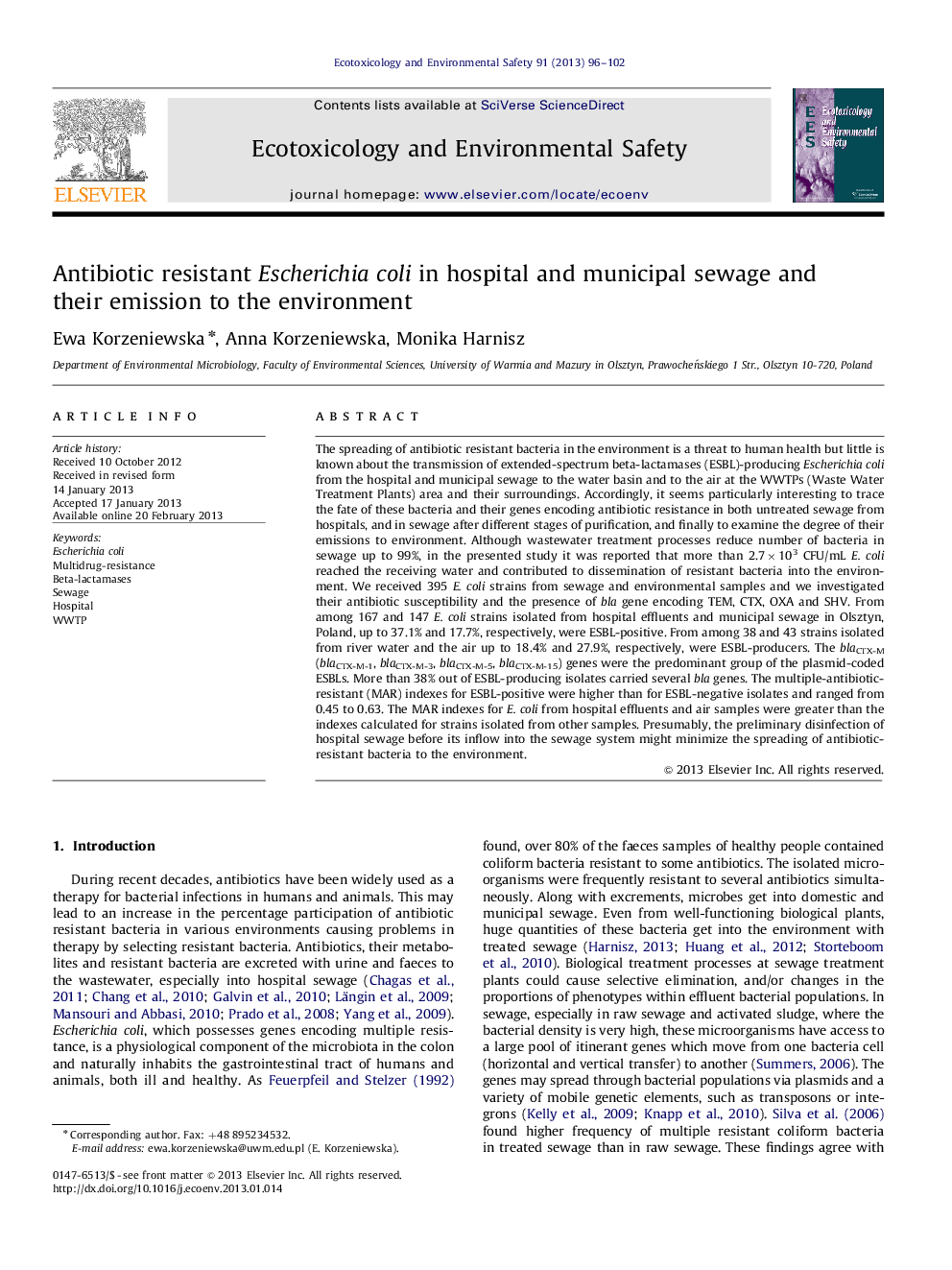| کد مقاله | کد نشریه | سال انتشار | مقاله انگلیسی | نسخه تمام متن |
|---|---|---|---|---|
| 4420518 | 1618972 | 2013 | 7 صفحه PDF | دانلود رایگان |

The spreading of antibiotic resistant bacteria in the environment is a threat to human health but little is known about the transmission of extended-spectrum beta-lactamases (ESBL)-producing Escherichia coli from the hospital and municipal sewage to the water basin and to the air at the WWTPs (Waste Water Treatment Plants) area and their surroundings. Accordingly, it seems particularly interesting to trace the fate of these bacteria and their genes encoding antibiotic resistance in both untreated sewage from hospitals, and in sewage after different stages of purification, and finally to examine the degree of their emissions to environment. Although wastewater treatment processes reduce number of bacteria in sewage up to 99%, in the presented study it was reported that more than 2.7×103 CFU/mL E. coli reached the receiving water and contributed to dissemination of resistant bacteria into the environment. We received 395 E. coli strains from sewage and environmental samples and we investigated their antibiotic susceptibility and the presence of bla gene encoding TEM, CTX, OXA and SHV. From among 167 and 147 E. coli strains isolated from hospital effluents and municipal sewage in Olsztyn, Poland, up to 37.1% and 17.7%, respectively, were ESBL-positive. From among 38 and 43 strains isolated from river water and the air up to 18.4% and 27.9%, respectively, were ESBL-producers. The blaCTX-M (blaCTX-M-1, blaCTX-M-3, blaCTX-M-5, blaCTX-M-15) genes were the predominant group of the plasmid-coded ESBLs. More than 38% out of ESBL-producing isolates carried several bla genes. The multiple-antibiotic-resistant (MAR) indexes for ESBL-positive were higher than for ESBL-negative isolates and ranged from 0.45 to 0.63. The MAR indexes for E. coli from hospital effluents and air samples were greater than the indexes calculated for strains isolated from other samples. Presumably, the preliminary disinfection of hospital sewage before its inflow into the sewage system might minimize the spreading of antibiotic-resistant bacteria to the environment.
Figure optionsDownload as PowerPoint slideHighlights
► Antibiotic resistance E. coli in sewage and environmental samples was investigated.
► The multiple-antibiotic-resistant (MAR) indexes for E. coli ranged from 0.36 to 0.63.
► More than 27.1% of isolated strains were ESBL-producers.
► The blaCTX-M-3, blaCTX-M-9 and blaSHV-5 genes were predominant.
Journal: Ecotoxicology and Environmental Safety - Volume 91, 1 May 2013, Pages 96–102